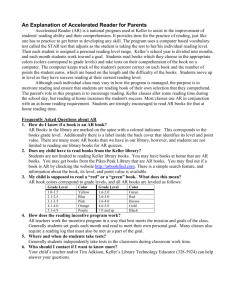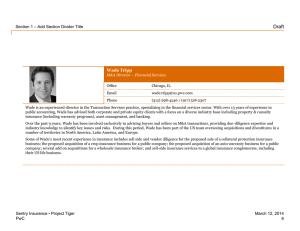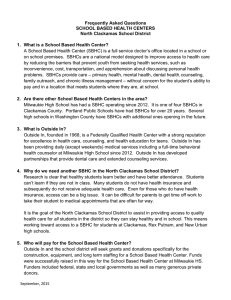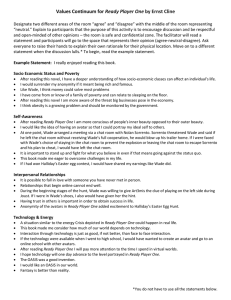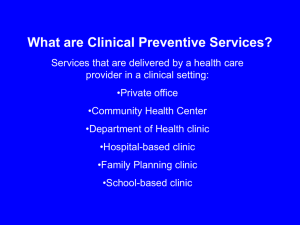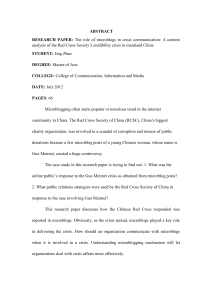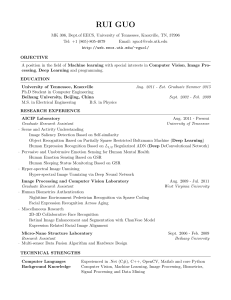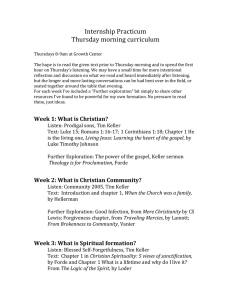USF DNP Rev 12.4
advertisement
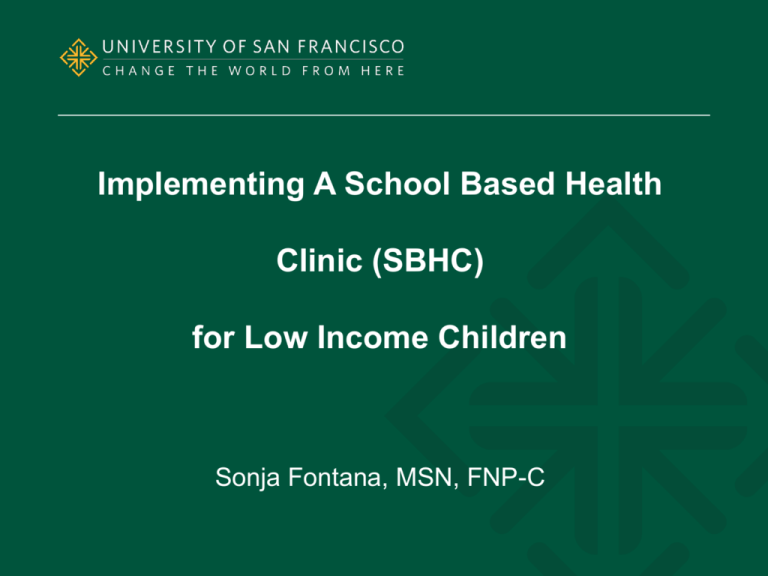
Implementing A School Based Health Clinic (SBHC) for Low Income Children Sonja Fontana, MSN, FNP-C Poor Access and Delivery of Healthcare Services Increases Socioeconomic Health Disparities Introduction Patient Centered Healthcare Model Microsystem SBHC . Mesosystem OCES Macrosystem Referrals & Resources Halloween @ OMG, 2012 Batalden, Nelson, Gardent, & Godfrey. (2005) Literature Review This project is designed to deliver a complete plan for implementation of a school-based health clinic for rural low-income elementary children. * Evidence Based Practice using the PDSA Model ***************** SWOT Analyses Strength Weakness Opportunities Threats Collaboration Between Professionals HIPPA Consent Scheduling Project Outcomes . Fire Drills Bell System Sprinklers * * Clinical Environment Objectives Summary of Advanced Practice Leadership Quality Improvement Committee Performance Training Summary of Process Project Results * Dissemination Plans Recruitment of Nursing Work Force Nursing, Credentialing, and Medical Students Replication References Allison, A. M., Crane, A. L., Beaty, L. B., Davidson, J. A., Melinkovich, P., & Kempe, A. (2007). School based health centers: Improving access and quality care for low income adolescents. American Academy of Pediatrics, 120(4), 887-894. Durlak, A. J., Weissberg, P. R., Dymnicki, B. A., Taylor, D. R., & Schellinger, B. K. (2011). The impact of enhancing students social and emotional learning: a meta-analysis of school based universal interventions. Child Development, 82(1), 405-432. Geierstanger, P. S., Amaral, G., Mansour, M., & Walters, R. S. (2004). School based health centers and performance: Research, challenges, and recommendations. Journal of School Health, 74(9), 347-352. Goltzman-Strolin, J. (2010). The relationship between school based health centers and the learning environment. Journal of School Health, 80(3), 153-159. * Guo, J. J., Wade, J. T., Pan, W., & Keller, N. K. (2010). School based health centers: Cost benefit analysis and impact on health care disparities. American Journal of Public Health, 100(9), 1617-1623. Guo, J. J., Wade, J. T., & Keller, N. K. (2008). Impact of school based health centers on students with mental health problems. Public Health Reports, 123, 768-780. Joint Center for Political and Economic Studies. (2012). Place matters for health in the San Joaquin Valley. Retrieved from http://www.humanneeds.ven.edu Kong, S. A., Sussman, L. A., Negrete, S., Patterson, N., Mittleman, R., & Hough, R. (2009). Implementation of a walking school bus: Lessons learned. Journal of School Health, 79(7), 319-325. McNail, A. M., Lichty, F. L., & Mavis, B. (2010). The impact of school based health centers on the health outcomes of middle school and high school students. American Journal of Public Health, 100(9),1604-1610. * Nordin, D. J., Solberg, I. L., & Parker, D. E. (2010). Adolescent primary care visit patterns. Annals of Family Medicine, 8(6), 511-516. Utter, J., Scragg, R., Robinson, E., Warbrick, J., Faeamani, G., Foroughian, S., et al. (2011). Evaluation of the living four life project: A youth-led, school based obesity prevention study. Obesity Reviews, 12, 51-60. Van Cura, M. (2010). The relationship between school based health centers, rates of early dismissal from school, and loss of seat time. Journal of School Health, 80(8), 371-377. Walker, C. S., Kerns, E. U. S., Lyon, R. A., Burns, J. E., & Cosgrove, T. J. (2009). Impact of school based health center use on academic outcomes. Journal of Adolescent Health, 46(3), 251-257.
